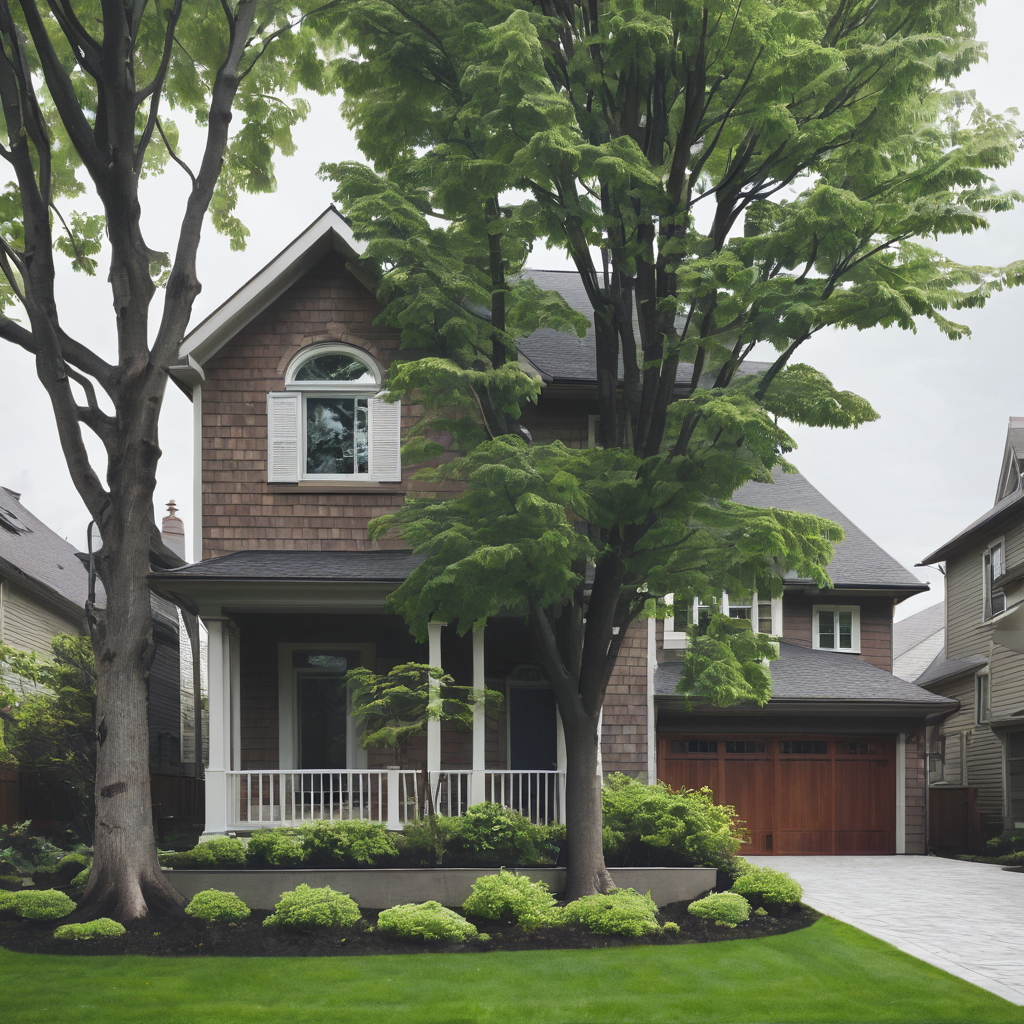
Planting trees around your home can enhance curb appeal, provide shade, and improve air quality. However, the placement of these trees is crucial; planting them too close to your home can lead to a host of problems that may outweigh the benefits. Here’s a closer look at the potential issues and how to avoid them.
1. Foundation Damage
One of the most significant risks of planting trees too close to your home is the potential for foundation damage. Tree roots naturally seek out water and nutrients, which can lead them to grow toward your home’s foundation. As roots expand, they can exert pressure on the foundation, causing cracks and structural instability. This is particularly problematic with large tree species that have aggressive root systems.
Tip: To mitigate this risk, plant trees at a minimum distance of the tree’s mature height from your home. For large trees, this distance can be 20 feet or more.
2. Roof and Gutter Issues
Overhanging branches can cause multiple problems for your roof and gutters. Leaves, twigs, and other debris can clog gutters, leading to water backup and potential damage to your roof and siding. Additionally, branches scraping against your roof can cause shingles to wear out more quickly or create openings for leaks.
Tip: Regularly trim trees to keep branches well away from your home. Installing gutter guards can also help reduce debris accumulation.
3. Pest Infestation
Trees close to your home can attract pests that might eventually find their way indoors. For instance, certain trees are known to harbor insects like ants or termites that can be drawn to wooden structures. Additionally, fruit-bearing trees can attract unwanted wildlife, which might pose further problems.
Tip: Choose pest-resistant tree varieties and maintain regular inspections of your home for signs of infestation.
4. Potential for Power Outages
Trees that grow too close to power lines can create significant issues, including power outages during storms or heavy winds. Falling branches or entire trees can disrupt electrical services and pose safety hazards.
Tip: Ensure that trees are planted a safe distance from power lines. Consult with your local utility company for guidelines specific to your area.
5. Soil Erosion
Large tree roots can contribute to soil erosion, particularly if they are planted on slopes or near the edges of driveways and walkways. Erosion can undermine landscaping and hardscaping features, potentially leading to costly repairs.
Tip: Plant trees with consideration of your home’s landscaping and grading. In some cases, installing retaining walls or other erosion control measures may be necessary.
6. Limited Sunlight
Trees that are too close to your home can block sunlight, reducing the amount of natural light entering your living spaces. This can make interiors feel darker and colder, increasing reliance on artificial lighting and heating.
Tip: Choose tree species that won’t grow too tall or wide, or strategically plant them in locations where they won’t obstruct sunlight to your home’s key living areas.
While trees can enhance the beauty and environmental health of your property, proper planning and placement are essential to avoid potential issues. By understanding the risks and taking proactive measures, you can enjoy the benefits of your trees without compromising the safety and integrity of your home.
If you’re considering tree planting around your home, consult with a landscaping professional or arborist to ensure optimal placement and avoid common pitfalls.
Cedar Hill St. Louis Jefferson County Olivette Kirkwood Ballwin Arnold Franklin County St Charles County Fenton High Ridge Dittmer Creve Coeur
